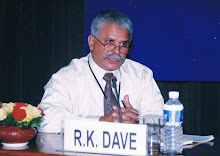Health has become a major issue of concern with rising population, rising middle class segment, rising diseases and deteriorating infrastructures in India. 25% of the Indian population has access to Western (allopathic) medicine, which is practiced mainly in urban areas, where two-thirds of India’s hospitals and health centers are located. Many of the rural poor must rely on alternative forms of treatment, such as ayurvedic medicine, unani and acupuncture.
25% of India’s specialist physicians reside in semi-urban areas and a mere 3 % live in rural areas. As a result, rural areas, with a population approaching 700 million, continue to be deprived of proper healthcare facilities.. Percolation of health care services in India is, perhaps, following the foot prints of cellular services rollout (between 1995-2005) where most of the telecom service providers concentrated their resources in urban and Semi urban areas with “areas’ revenue generation capability” as single major factor. Increasing middle class population with their improved economic conditions has increased heath care demand in urban and semi urban area which has further resulted into increased “health care service delivery gap” between urban and rural. India’s healthcare infrastructure has not kept pace with the economy’s growth.
The physical infrastructure for health serive delivery in India is woefully inadequate to meet today’s healthcare demands, much less tomorrow’s and will need finite time to reach a reasonable level. But, there is an urgent need to identify and implement required resources and strategy for bridging health care service delivery gap in urban & rural area.
One solution is telemedicine— the remote consultation, diagnosis, monitoring and treatment of patients via videoconferencing or the Internet, training/education and management of medical service providers in rural area. The exponential growth in the country’s information and communications technology (ICT) sector, and plummeting telecom costs has made telemedicine as one of the viable strategy for bridging health service delivery gap between urban and rural.
Thus a logic consequence is having a common communication plate-form for health professionals, Governance, and technocrats to deliberate on the best practices and customize befitting telemedicine solution for India – a role RESPECT will play again in workshop on “teledicine for India” on 15th Dec 2011.
PROGRAM SCHEDULE
15TH Dec 2011 : 1030 AM Inauguration & Tea
1045 AM: Keynote - Sh. Rajesh Kishore, IAS, Principle Secretary (Health)
1115 – 1315: AM Brain storming session on “Telemedicine in India” – what we have and
what we Need!
Expert Contributors:
Prof.K.V.Ramani,(IIM-A),Prof.Dilip Mavlankar(TBC*), Rama Subramanian (BioPure HealthCare), S.N.Gupta (British Telecom), Dr R K Dave, Dr. Tejas, Dr. Anil N Ved, Mr. A K Gupta, Mr. Chandira, Dr. Srikant (A3 RMT), Monika setia (IIPHG ), Mr. A K Kaul, Devan Parikh, Shard Raval, and other invited exerts and officials from health care and Governance
Subjects / issues
Current approach to Telemedicine, learning’s from experimentations done
so far, Emerging Trends, Bottlenecks and limitations, possible approach of
“Telemedicine for India with Gujarat as a pilot state”
1315 PM Recommendations / Conclusion
1330 PM Vote of Thanks
1330 PM Lunch
1430 PM On wards - Technology Display / Demonstration
*TBC- To be confirmed
25% of India’s specialist physicians reside in semi-urban areas and a mere 3 % live in rural areas. As a result, rural areas, with a population approaching 700 million, continue to be deprived of proper healthcare facilities.. Percolation of health care services in India is, perhaps, following the foot prints of cellular services rollout (between 1995-2005) where most of the telecom service providers concentrated their resources in urban and Semi urban areas with “areas’ revenue generation capability” as single major factor. Increasing middle class population with their improved economic conditions has increased heath care demand in urban and semi urban area which has further resulted into increased “health care service delivery gap” between urban and rural. India’s healthcare infrastructure has not kept pace with the economy’s growth.
The physical infrastructure for health serive delivery in India is woefully inadequate to meet today’s healthcare demands, much less tomorrow’s and will need finite time to reach a reasonable level. But, there is an urgent need to identify and implement required resources and strategy for bridging health care service delivery gap in urban & rural area.
One solution is telemedicine— the remote consultation, diagnosis, monitoring and treatment of patients via videoconferencing or the Internet, training/education and management of medical service providers in rural area. The exponential growth in the country’s information and communications technology (ICT) sector, and plummeting telecom costs has made telemedicine as one of the viable strategy for bridging health service delivery gap between urban and rural.
Thus a logic consequence is having a common communication plate-form for health professionals, Governance, and technocrats to deliberate on the best practices and customize befitting telemedicine solution for India – a role RESPECT will play again in workshop on “teledicine for India” on 15th Dec 2011.
PROGRAM SCHEDULE
15TH Dec 2011 : 1030 AM Inauguration & Tea
1045 AM: Keynote - Sh. Rajesh Kishore, IAS, Principle Secretary (Health)
1115 – 1315: AM Brain storming session on “Telemedicine in India” – what we have and
what we Need!
Expert Contributors:
Prof.K.V.Ramani,(IIM-A),Prof.Dilip Mavlankar(TBC*), Rama Subramanian (BioPure HealthCare), S.N.Gupta (British Telecom), Dr R K Dave, Dr. Tejas, Dr. Anil N Ved, Mr. A K Gupta, Mr. Chandira, Dr. Srikant (A3 RMT), Monika setia (IIPHG ), Mr. A K Kaul, Devan Parikh, Shard Raval, and other invited exerts and officials from health care and Governance
Subjects / issues
Current approach to Telemedicine, learning’s from experimentations done
so far, Emerging Trends, Bottlenecks and limitations, possible approach of
“Telemedicine for India with Gujarat as a pilot state”
1315 PM Recommendations / Conclusion
1330 PM Vote of Thanks
1330 PM Lunch
1430 PM On wards - Technology Display / Demonstration
*TBC- To be confirmed



